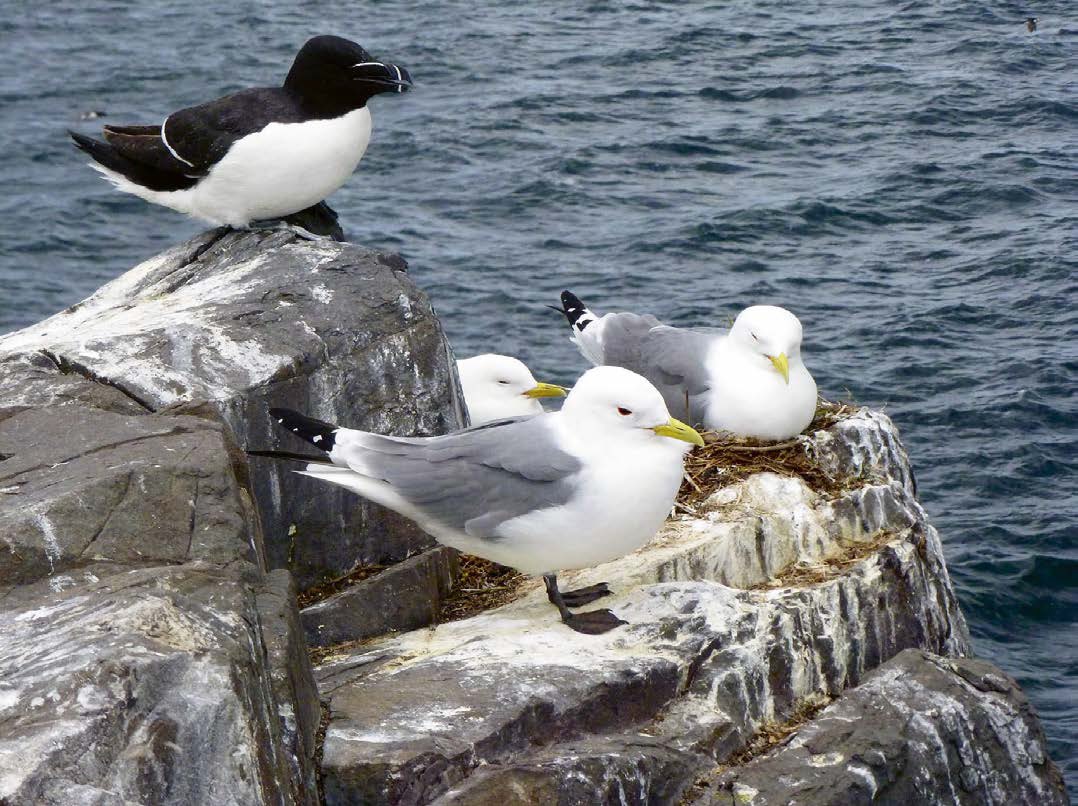
A wildlife visit to the remote St Kilda
The isolated archipelago of St Kilda, Great Britain’s most westerly point, needs our help to ensure that it remains rich with wildlife and history.
St Kilda always provokes a passionate response.
So many people would love to go there, while those lucky enough to have done so will tell you colourful tales of their voyage to our furthest flung islands, some 110 miles off the west coast of mainland Scotland.
It’s simpler to arrange a flight to Australia than it is to be sure of travel arrangements to St Kilda, the Atlantic swell enough to make the best sailor ill, and it’s certainly no place to be stormbound.
And even on arrival at Hirta, the largest of the archipelago’s four islands, sea conditions close inshore may not permit safe landing, as hundreds of eager tourists each year have found to their frustration. Moored there at Village Bay, boats may drag anchor in the tireless pull and suck of the tides. St Kilda is a wild control freak that ensures we realise our humble place in nature’s grand scheme.
A storm put paid to plans when I was recently invited to join a party of 12, organised by the National Trust for Scotland, for a special commemoration, and the launch of a vitally important new appeal, Love Our Islands.

Nearly a million seabirds nest on St Kilda including kittiwakes and razorbills. (Photo: Polly Pullar)
Rescheduled for a brief weather window two days later, 90% of the party fell by the wayside, but I was fortunate enough to make it, spending several magical hours on and around the islands in a balmy breeze and sunshine.
And it was magic: rafts of puffins in a navy-blue sea twinkling with sun stars; the salt sea tang; hardbitten sheep turf fringing cliffs bursting with sea pinks; and fulmars cruising low over the land or sitting tight on eggs.
Overhead, great skuas, or bonxies, harried returning birds and tried to steal their catch. At the base of the highest cliffs in Britain, tightly packed guillemots were busy raising penguin-like chicks.
This was my fourth visit, the first for a decade, and I was thrilled to be back. I sat on the clifftop surrounded by Soay sheep, next to the infamous Mistress Stone where the St Kildan men stood above a vertiginous drop to prove their prowess. But my heart felt heavy.
In 1931 the Marquess of Bute, a knowledgeable ornithologist, bought the St Kilda islands, bequeathing them to the NTS in 1957. It is now 30 years since these savage, wind-battered islands became a Unesco World Heritage Site, recognised for their outstanding wildlife and natural beauty. It has since become the UK’s first and only mixed World Heritage Site, one of just 32 worldwide, for its ancient cultural landscape.
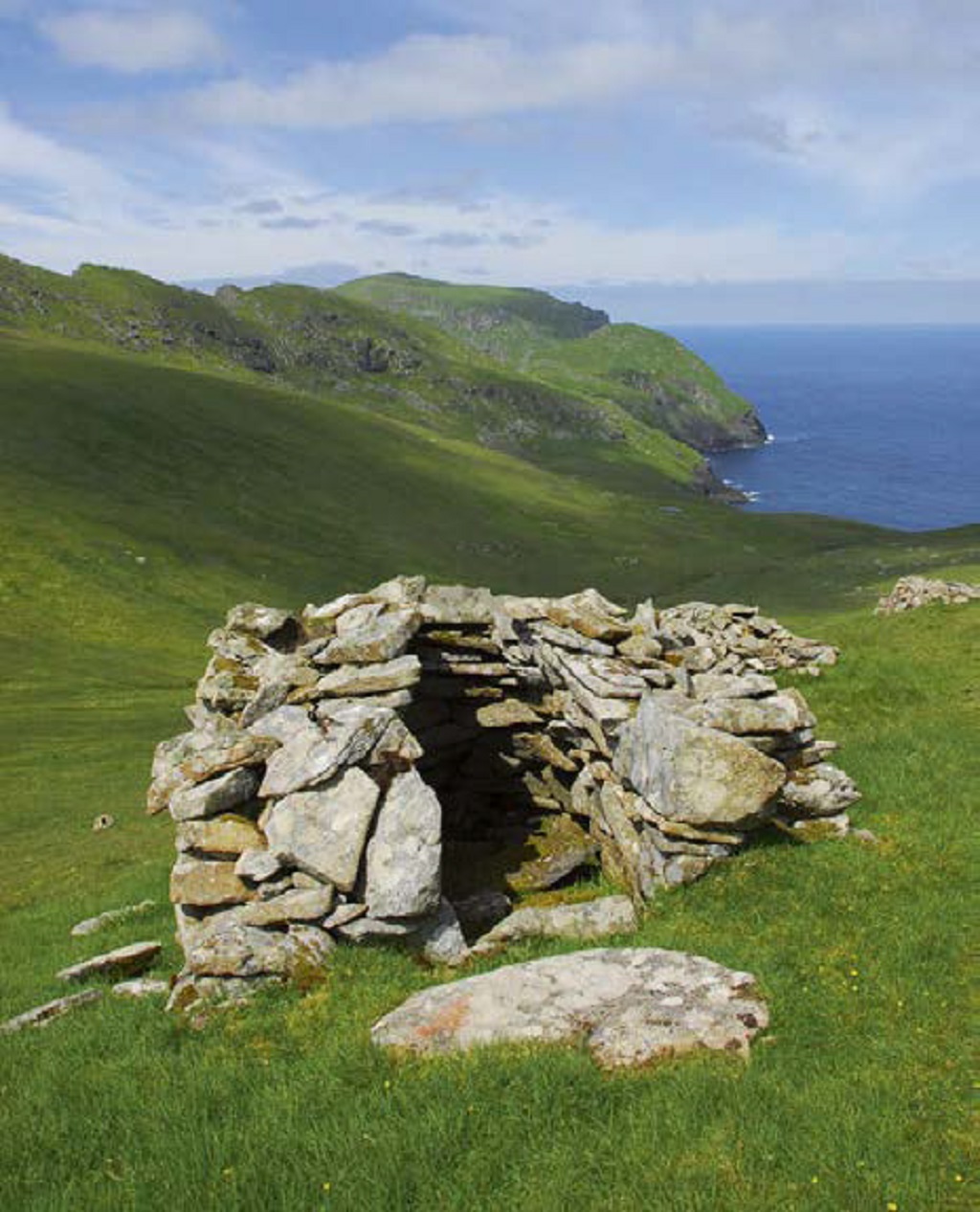
Looking towards Gleann Mor, in the north west of Hirta (Photo: Polly Pullar)
This is a place that has long attracted writers, scientists, photographers and archaeologists; its dramatic story reveals extraordinary land use, a subsistence-based economy centred on seabirds, primitive land cultivation, and keeping of our oldest breed of sheep, the Soay.
However, following the evacuation of the last surviving St Kildans in 1930, the age-old practices and fragile land management system have become even more vulnerable. More visitors bring more problems, and now there is a new concern, a very real and serious threat.
Seabirds in the north Atlantic are in dramatic decline. Surveys carried out on St Kilda last year reveal a massive population crash. The blacklegged kittiwake has declined by a shocking 89% since a survey here in 1999. Its absence was notable even since my last visit; and it appears this important colony is fast heading for extinction.
Fulmar numbers have dropped by 56% during the same time frame, while guillemot numbers have halved. St Kilda acts as a barometer for the health of our seas, and the current situation reveals an ugly downward spiral.
Climate change and warming seas, a reduction in sand eels, more disturbance, predation, pollutants and plastics are all cited as causes. And it is vital that we help. The Love Our Islands appeal urgently needs funds to ascertain exactly what is causing this catastrophic situation, and what we can do about it before it’s too late, and St Kilda’s seabirds, like its people, fall off the map.
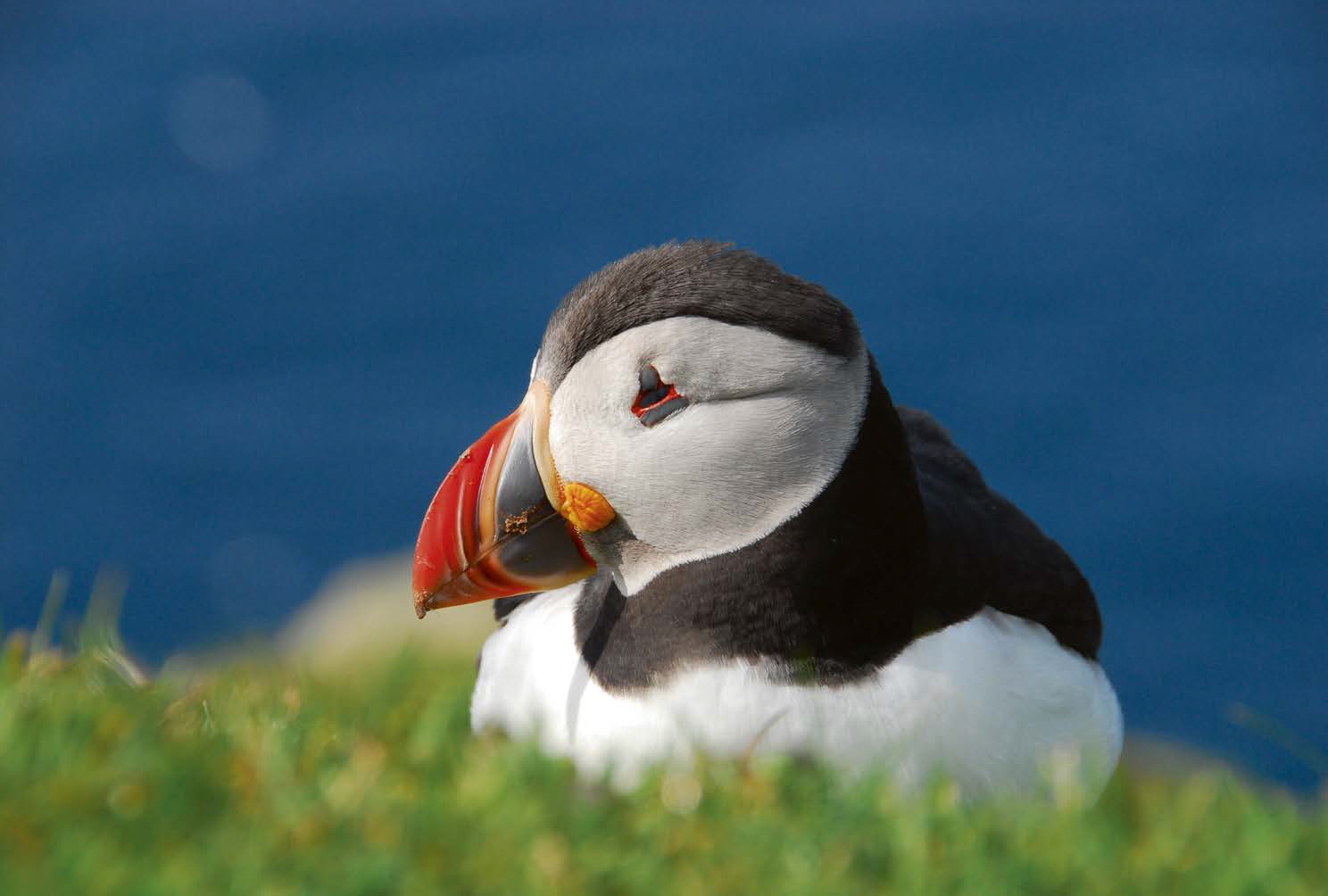
The brightly coloured bill of a puffin stands out on a clifftop (Photo: Polly Pullar)
‘Anyone who cares about our seabirds and the health of our oceans will appreciate the work we do here year on year,’ says Sir Moir Lockhead, chairman of the NTS. ‘Our seabird survey shows major impacts on sea conditions and the species which depend on the marine environment.’
I will never forget my first visit to St Kilda. I stayed on a boat moored in the bay during several days of calm weather. Ashore one moonlit night, I stood in a cleit – one of the 1,400 beehive-shaped stone structures found all over the islands – listening to the eerie drumming of snipe as a full moon rose over Village Bay.
In the daytime the cleits with their earth floors and sheltering Soay sheep provide a perfect place for snipe to probe for invertebrates, accompanied by the sweet song of the larger St Kilda wren.
Next day, a sail around the great bastions of Stac Lee and Stac an Armin beneath a sky dark with thousands of airborne gannets, the light shining through their great white wings, was one of the finest wildlife spectacles I have ever witnessed.
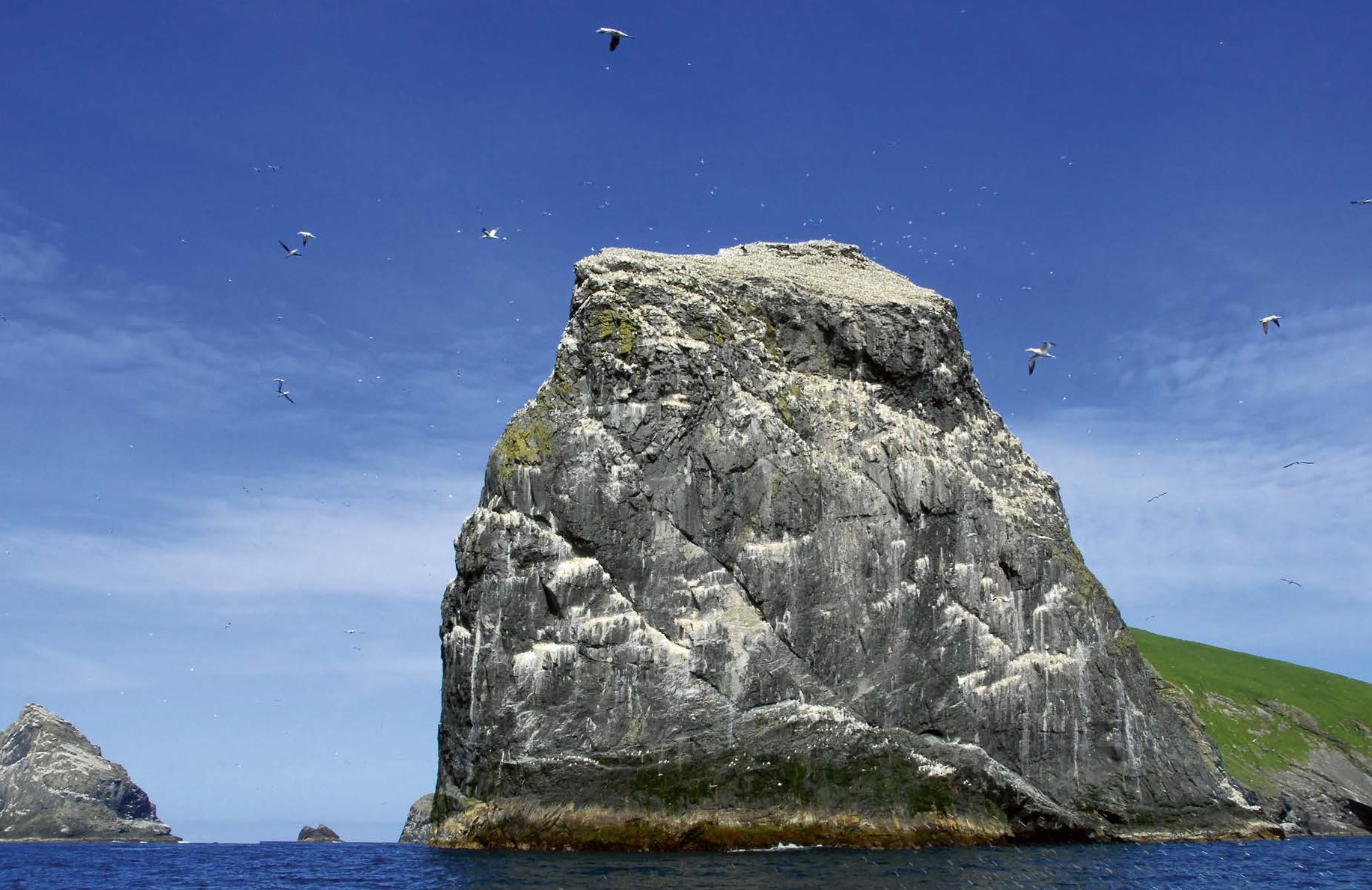
St Kilda is home to the world’s second largest gannet colony (Photo: Polly Pullar)
On my latest visit, I travelled to St Kilda from Skye in a fast rib taking a mere three and a half hours to get there. We cruised around, first to Dun to see massive wheels of puffins, as a minke whale put in a brief appearance close to the boat, and then on to the great sea stacs, and Boreray, the latter lushly green from the guano of thousands of birds.
And once more the clamour of gannets filled an azure sky leaving me awestruck and emotional. The scene had lost none of its poignancy. To some it may have seemed as if nothing was amiss, surrounded as we were by thousands of seabirds.
As we left the mysterious outlines of St Kilda’s isles far behind, and bounced back across a benign and goldrinsed Atlantic, I was aware that the National Trust for Scotland needs our help urgently to ensure that one of the world’s most important wild places is safeguarded.
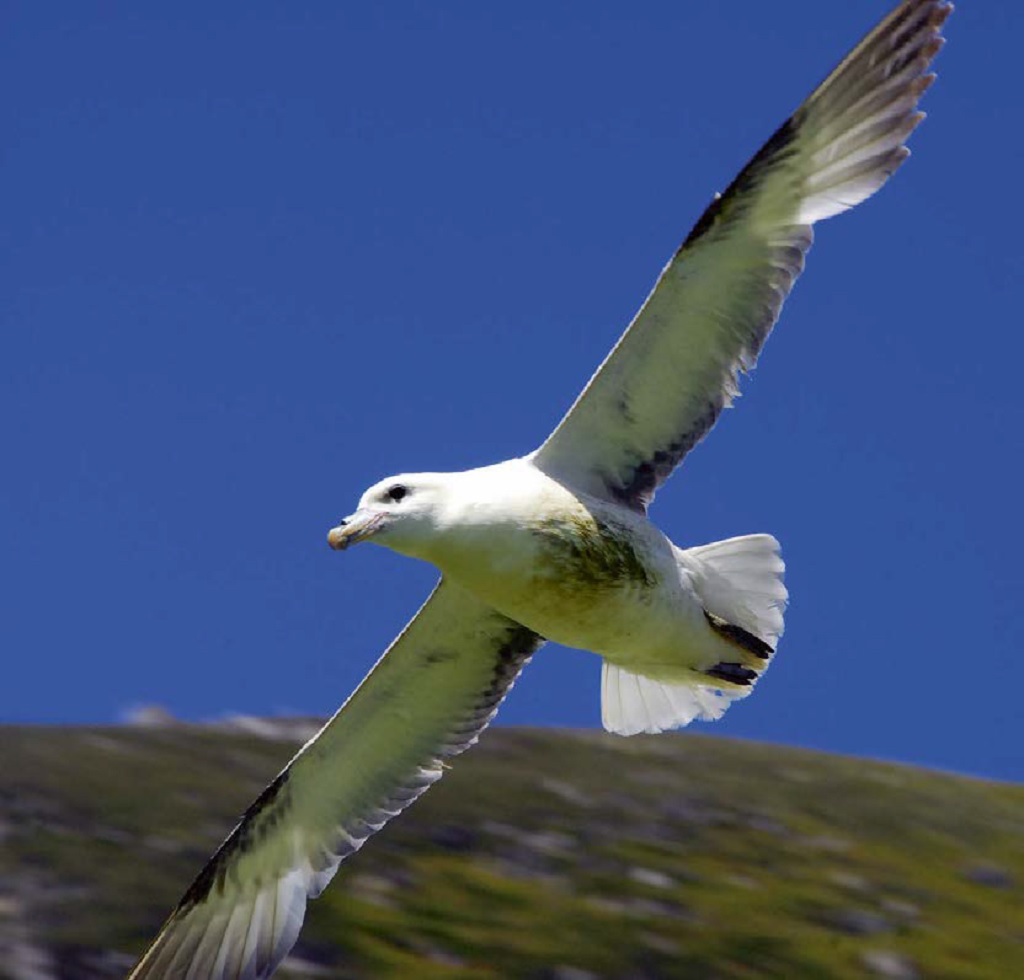
A fulmar soars majestic against the blue (Photo: Polly Pullar)
Love Our Islands is a vital appeal that must not be overlooked. Ignore this and our precious seabird cities will become silent, and there will be no going back.
Thinking of visiting St Kilda? Visit www.kilda.org.uk for further details.
(This feature was originally published in 2016)
TAGS

